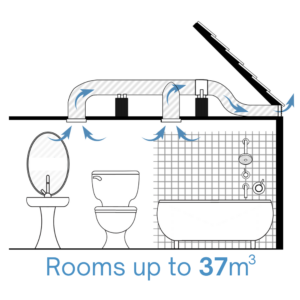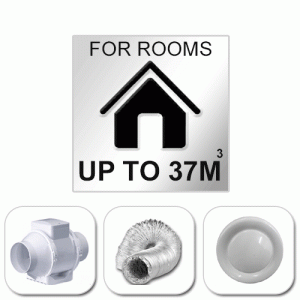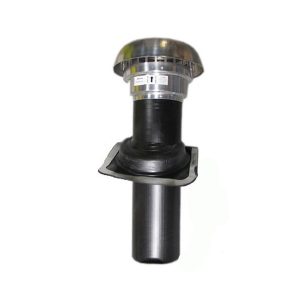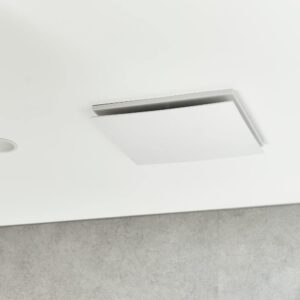Education & Advice
Do I need to duct my exhaust fan to the outside?
What does the BCA (Building Code of Australia) say? Below are two statements:
1) If the roof is not lined with sarking material (typically silver paper insulation) and is clad with roofing tiles or decking with adequate air leakage to the outside, fans can be mounted in the ceiling exhausting into the roof space.
2) If the roof is lined with sarking material then the air needs to be ducted to the outside atmosphere.
Ducting Requirements in a new house
All new houses are built to certain energy efficiency regulations, which means that for new builds statement 2 is applicable. In practical terms this means that new roofs are sealed and will therefore need your ventilation system to be ducted to the outside. This could be in the form of an eave vent, roof mounted cowl or an external wall vent. Ventilating from a moisture laden bathroom into a fully sealed roof will mean that the moisture will have no way of escaping, which could have long term adverse effects on your roof. Moisture trapped within the roof structure can result in long term corrosion of metal, timber rot, loosening of nails as timber swells, and cladding rot or swelling which can result in costly rectification work.
If you have an older house you may have a tiled roof with no sarking material covering the underside of the tiles. Without this full coverage your roof will not be as energy efficient, but will have small gaps between the tiles that allow for entry and exit of air passively. These gaps mean any moisture laden air will have the opportunity to escape. This does not mean that you cannot or should not duct your system to the outside, in fact you may still wish to do so. Especially if you have a roof with ample space and its easy enough to put in a vent under the eave.
What are the most suitable products to duct outside?
If you are looking for a ceiling mounted fan simply pick one that is ductable. Each ductable fan will have the required duct diameter mentioned on the listing. Most ceiling mounted fans are suitable for ducting a few meters maximum. For a higher airflow solution you could consider an inline fan or roof mounted fan. View some practical examples below:
Inline Fan Kit
A high power inline fan situated in the roofspace, connected to an intake vent in the bathroom and an external vent to go outside under an eave.
Roof Mounted Fan
Mount a fan directly on your roof and run ducting down to an intake vent in your bathroom / toilet. This is only suitable for a room directly below a roof that is exposed to the atmosphere. Below are some popular roof fan options:
Ceiling Mounted Fan ducted to an eave vent
Connect your ceiling mounted fan to an external under eave vent with some flexible ducting. Below is an example of a ceiling mounted fan with some ducting and an external eave vent.
Ceiling Mounted Fan ducted with a roof cowl
Connect your ceiling mounted fan to a roof mounted cowl. Below is an example of a ceiling fan with ducting and a roof cowl kit (one for metal and one for a tiled roof)
Go through a wall or window
Exhaust directly to the outside through a wall or window. A common solution for apartment buildings or a house with a ground floor bathroom that has no cavity above the ceiling.
Content updated – April 2024 by Andy



















